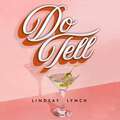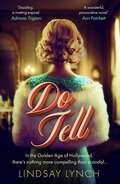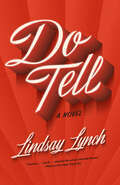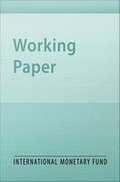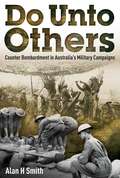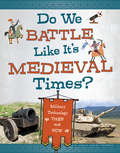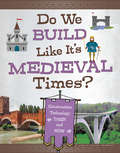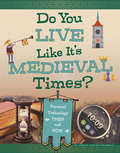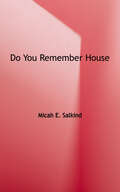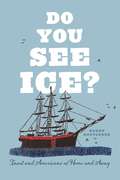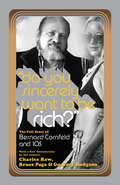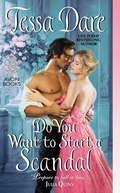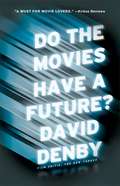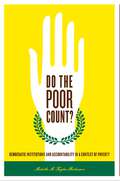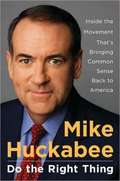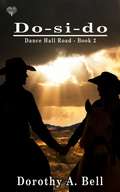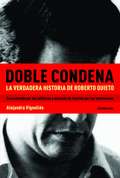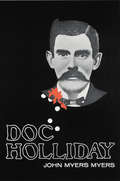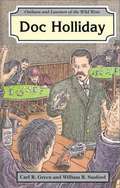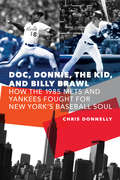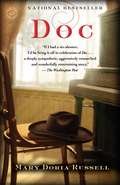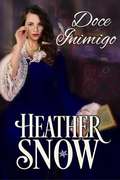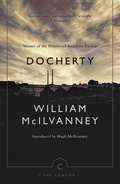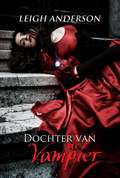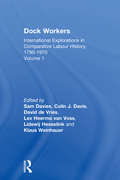- Table View
- List View
Do Tell
by Lindsay LynchA glamorous, gossipy, whip-smart and poignant vision of behind-the-scenes 1940s Hollywood, perfect for fans of The Seven Husbands of Evelyn Hugo and Mercury Pictures PresentsTHERE'S NOTHING STRONGER THAN A GOOD STORY. THE QUESTION IS: WHO GETS TO TELL IT?The clock is ticking on Hollywood actress Edie O'Dare's contract with FWM Studios. Her acting career is going nowhere, and she's running out of time to find a new role in the industry - other than providing salacious details of the latest party or premiere to the press. So when an up-and-coming starlet hands her an explosive letter - alleging an assault by an A-list actor - Edie helps get the story into print, and buys herself a new career as Tinseltown's new reigning gossip columnist. Edie has more power on the page than she ever commanded in front of the camera. But dealing in your former friends' secrets comes at a price - and when her scoop turns into the trial of the decade, Edie's decisions have the potential to ruin more than one life . . . Do Tell is a glittering journey into golden age Hollywood, and a sharply relevant exploration of secrets, power, and who gets to tell your story.Praise for Do Tell:'Do Tell is an absolute marvel: page-turning yet thought-provoking, historical in its setting yet contemporary in its concerns. . . A deeply moving, immensely satisfying, blockbuster of a debut novel'Anthony Marra'Like our intrepid narrator, Do Tell manages to be both funny and substantive, breezy and wise. I stepped into the stream of the narrative and didn't look up until I came to the last page' Ann Patchett, author of The Dutch House'There is little more alluring than the promise of secrets, and Do Tell is full of them--glamorous, tawdry, and human. Lindsay Lynch has created a rich portrait of the lives of early Hollywood's beautiful puppets and those holding their strings'Emma Straub, author of This Time Tomorrow 'Gossip columnist Edie O'Dare has enemies and sources, but no friends in a Golden Age Hollywood whose gleam is tarnished by exploitation, cruelty and betrayal. Like a latter-day Cecil B. DeMille, Lindsay Lynch deftly directs her large cast of morally complex characters to illuminate issues of fame and notoriety as relevant now as they were almost a century ago'Geraldine Brooks, New York Times bestselling author of Horse'In Do Tell Lindsay Lynch takes a glance back at golden-age Hollywood and captures the fizzy magic, the secret lives, and the deep, destructive misogyny within the industry's DNA. This is a wry, entertaining, and incisive debut'Lily King, bestselling author of Writers & Lovers (P)2023 Hodder & Stoughton Limited
Do Tell
by Lindsay Lynch'Do Tell is an absolute marvel: page-turning yet thought-provoking, historical in its setting yet contemporary in its concerns. . . A deeply moving, immensely satisfying, blockbuster of a debut novel' Anthony Marra***THERE'S NOTHING STRONGER THAN A GOOD STORY. THE QUESTION IS: WHO GETS TO TELL IT? The clock is ticking on Hollywood actress Edie O'Dare's contract with FWM Studios. Her acting career is going nowhere, and she's running out of time to find a new role in the industry - other than providing salacious details of the latest party or premiere to the press. So when an up-and-coming starlet hands her an explosive letter - alleging an assault by an A-list actor - Edie helps get the story into print, and buys herself a new career as Tinseltown's new reigning gossip columnist. Edie has more power on the page than she ever commanded in front of the camera. But dealing in your former friends' secrets comes at a price - and when her scoop turns into the trial of the decade, Edie's decisions have the potential to ruin more than one life . . . Do Tell is a glittering journey into golden age Hollywood, and a sharply relevant exploration of secrets, power, and who gets to tell your story.Praise for Do Tell:'Like our intrepid narrator, Do Tell manages to be both funny and substantive, breezy and wise. I stepped into the stream of the narrative and didn't look up until I came to the last page' Ann Patchett, author of The Dutch House'There is little more alluring than the promise of secrets, and Do Tell is full of them--glamorous, tawdry, and human. Lindsay Lynch has created a rich portrait of the lives of early Hollywood's beautiful puppets and those holding their strings'Emma Straub, author of This Time Tomorrow 'Gossip columnist Edie O'Dare has enemies and sources, but no friends in a Golden Age Hollywood whose gleam is tarnished by exploitation, cruelty and betrayal. Like a latter-day Cecil B. DeMille, Lindsay Lynch deftly directs her large cast of morally complex characters to illuminate issues of fame and notoriety as relevant now as they were almost a century ago'Geraldine Brooks, New York Times bestselling author of Horse'In Do Tell Lindsay Lynch takes a glance back at golden-age Hollywood and captures the fizzy magic, the secret lives, and the deep, destructive misogyny within the industry's DNA. This is a wry, entertaining, and incisive debut'Lily King, bestselling author of Writers & Lovers 'Reveals the tawdry truth behind the glitz and glamour of Golden Age Hollywood, as gossip columnist Edie struggles to decide which secrets to keep and which secrets to spill. Thoroughly immersive and most enjoyable!' Anita Frank, author of The Lost Ones
Do Tell: A Novel
by Lindsay LynchA scintillating debut novel that brings the golden age of Hollywood to glittering life, from star-studded opening nights to backlot brawls, on-location Westerns to the Hollywood Canteen. Through character actress turned gossip columnist Edie O'Dare's eyes, Lindsay Lynch draws back the curtain on classic Hollywood&’s secrets. "Glamorous, tawdry, and human. A rich portrait of the lives of early Hollywood's beautiful puppets and those holding their strings.&” –Emma Straub, New York Times bestselling author of This Time Tomorrow • &“Do Tell illuminates issues of fame and notoriety as relevant now as they were almost a century ago.&” –Geraldine Brooks, New York Times bestselling author of HorseAs character actress Edie O'Dare finishes the final year of her contract with FWM Studios, the clock is ticking for her to find a new gig after an undistinguished stint in the pictures. She's long supplemented her income moonlighting for Hollywood's reigning gossip columnist, providing her with the salacious details of every party and premiere. When an up-and-coming starlet hands her a letter alleging an assault from an A-list actor at a party with Edie and the rest of the industry&’s biggest names in attendance, Edie helps get the story into print and sets off a chain of events that will alter the trajectories of everyone involved. Now on a new side of the entertainment business, Edie&’s second act career grants her more control on the page than she ever commanded in front of the camera. But Edie quickly learns that publishing the secrets of those former colleagues she considers friends has repercussions. And when she finds herself in the middle of the trial of the decade, Edie is forced to make an impossible choice with the potential to ruin more than one life. Full of sharp observation and crackling wit, debut novelist Lindsay Lynch maps the intricate networks of power that manufacture the magic of the movies and interrogates who actually gets to tell women's stories.
Do Trading Partners Still Matter for Nigeria's Growth? A Contribution to the Debate on Decoupling and Spillovers
by Kingsley I. ObioraA report from the International Monetary Fund.
Do Unto Others: Counter Bombardment in Australia's Military Campaigns
by Alan H. SmithSince 1899, the significant role Australian gunners have played in supporting the Australian Military Forces' campaigns has been well-documented. They have gallantly and whole-heartedly supported Australian, British, New Zealand and Indian armies in both World Wars, the Korean and Borneo Confrontation Wars and most recently the Vietnam War. Do Unto Others is a comprehensive account of the history of counter bombardment, including the development of Australian techniques, equipment and procedures through the campaigns up until Vietnam, with references to the techniques and actions of the British and American artillery included where appropriate to place the Australian experience in perspective. It is also the story of the brave men behind the artillery and their outstanding efforts and results across these varied campaigns.
Do We Battle Like It's Medieval Times?: Military Technology Then and Now (Medieval Tech Today)
by Megan Cooley PetersonFrom gunpowder to armor, medieval innovators helped develop and improve some important weaponry and warfare technology we use today. The Middle Ages were crucial for the development of technologies such as warships, battering rams, cannons, and more! Discover how we still fight like we're in medieval times with interesting historical facts, scientific details, and illuminating photos.
Do We Build Like It's Medieval Times?: Construction Technology Then and Now (Medieval Tech Today)
by Megan Cooley PetersonFrom cranes to castles, medieval innovators helped develop and improve some important construction technology we use today. The Middle Ages were crucial for the development of technologies such as the chimney, central heating, the flying buttress, and more! Discover how we still build like we're in medieval times with interesting historical facts, scientific details, and illuminating photos.
Do You Live Like It's Medieval Times?: Personal Technology Then and Now (Medieval Tech Today)
by Megan Cooley PetersonFrom soap to pretzels, medieval innovators helped develop or improve some important technology we use in our daily lives. The Middle Ages were crucial for the improvement of chess, the compass, glasses, and more! Discover how we still live like we're in medieval times with historical facts, scientific details, and illuminating photos.
Do You Remember House?: Chicago's Queer of Color Undergrounds
by Micah E. SalkindToday, no matter where you are in the world, you can turn on a radio and hear the echoes and influences of Chicago house music. <p><p>Do You Remember House? tells a comprehensive story of the emergence, and contemporary memorialization of house in Chicago, tracing the development of Chicago house music culture from its beginnings in the late '70s to the present. Based on expansive research in archives and his extensive conversations with the makers of house in Chicago's parks, clubs, museums, and dance studios, author Micah Salkind argues that the remediation and adaptation of house music by crossover communities in its first decade shaped the ways that Chicago producers, DJs, dancers, and promoters today re-remember and mobilize the genre as an archive of collectivity and congregation. The book's engagement with musical, kinesthetic, and visual aspects of house music culture builds from a tradition of queer of color critique. As such, Do You Remember House? considers house music's liberatory potential in terms of its genre-defiant repertoire in motion. <p><p>Ultimately, the book argues that even as house music culture has been appropriated and exploited, the music's porosity and flexibility have allowed it to remain what pioneering Chicago DJ Craig Cannon calls a "musical Stonewall" for queers and people of color in the Windy City and around the world.
Do You See Ice?: Inuit and Americans at Home and Away
by Karen RoutledgeMany Americans imagine the Arctic as harsh, freezing, and nearly uninhabitable. The living Arctic, however—the one experienced by native Inuit and others who work and travel there—is a diverse region shaped by much more than stereotype and mythology. Do You See Ice? presents a history of Arctic encounters from 1850 to 1920 based on Inuit and American accounts, revealing how people made sense of new or changing environments. Routledge vividly depicts the experiences of American whalers and explorers in Inuit homelands. Conversely, she relates stories of Inuit who traveled to the northeastern United States and were similarly challenged by the norms, practices, and weather they found there. Standing apart from earlier books of Arctic cultural research—which tend to focus on either Western expeditions or Inuit life—Do You See Ice? explores relationships between these two groups in a range of northern and temperate locations. Based on archival research and conversations with Inuit Elders and experts, Routledge’s book is grounded by ideas of home: how Inuit and Americans often experienced each other’s countries as dangerous and inhospitable, how they tried to feel at home in unfamiliar places, and why these feelings and experiences continue to resonate today.The author intends to donate all royalties from this book to the Elders’ Room at the Angmarlik Center in Pangnirtung, Nunavut.
Do You Sincerely Want to Be Rich? The Full Story of Bernard Cornfeld and I. O. S.
by Godfrey Hodgson Charles Raw Bruce PageIn the fall of 1955, Bernard Cornfeld arrived in Paris with scant money in his pocket and a tenuous relationship with a New York firm to sell mutual funds overseas. Cornfeld, a former psychologist and social worker, knew how to make friends fast and soon targeted two groups of people who could help him fulfill his economic ambitions: American expatriates who were looking to build their own fortunes and servicemen abroad who loved to live high-rolling lives and spend money. Using the first group as door-to-door salesmen and the second group as his gullible target, Cornfeld built a multi-billion-dollar and multi-national company, famous for its salesmen's winning one-line pitch: "Do you sincerely want to be rich?" In this eye-opening yet entertaining book, an award-winning "Insight" team of the London Sunday Times examines Cornfeld's impressive scheme, a classic example of good, old-fashioned American business gumption and guile.
Do You Want to Start a Scandal
by Tessa DareOn the night of the Parkhurst ball, someone had a scandalous tryst in the library.Was it Lord Canby, with the maid, on the divan? Or Miss Fairchild, with a rake, against the wall? Perhaps the butler did it.All Charlotte Highwood knows is this: it wasn't her. But rumors to the contrary are buzzing. Unless she can discover the lovers' true identity, she'll be forced to marry Piers Brandon, Lord Granville--the coldest, most arrogantly handsome gentleman she's ever had the misfortune to embrace.When it comes to emotion, the man hasn't got a clue.But as they set about finding the mystery lovers, Piers reveals a few secrets of his own. The oh-so-proper marquess can pick locks, land punches, tease with sly wit . . . and melt a woman's knees with a single kiss. The only thing he guards more fiercely than Charlotte's safety is the truth about his dark past.Their passion is intense. The danger is real. Soon Charlotte's feeling torn. Will she risk all to prove her innocence? Or surrender it to a man who's sworn to never love?
Do the Movies Have a Future?
by David DenbyIn the second decade of the twenty-first century, the movies, once America's primary popular art form, have become an endangered species. Do the Movies Have a Future? is a rousing and witty call to arms. In these sharp and engaging essays and reviews, New Yorker movie critic David Denby weighs in on "conglomerate aesthetics," as embodied in the frenzied, weightless action spectacles that dominate the world's attention, and "platform agnosticism," the notion that movies can be watched on smaller and smaller screens: laptops, tablets, even phones. At the same time, Denby reaffirms that movies are our national theater, and in this exhilarating book he celebrates such central big movies as Avatar and The Social Network as well as small but resonant triumphs like There Will Be Blood and The Tree of Life. Denby joyously celebrates what remains of the shared culture in romantic comedy, high school movies, and chick flicks; he assesses the expressive triumphs and failures of auteurs Quentin Tarantino, the Coen brothers, Pedro Almodóvar, and David Fincher. Refusing nostalgia, he mines the past for strength, examining the changing nature of stardom and the careers of Joan Crawford, Otto Preminger, and Victor Fleming, and the continuing self-invention of Clint Eastwood. And he recreates the excitement of reading two critics who embodied the film culture of their times, James Agee and Pauline Kael. Wry, passionate, and incisive, Do the Movies Have a Future? is both a feast of good writing and a challenge to fight back. It is an essential guide for movie lovers looking for ammunition and hope.
Do the Poor Count?: Democratic Institutions and Accountability in a Context of Poverty (G - Reference, Information and Interdisciplinary Subjects)
by Michelle M. Taylor-RobinsonLatin America’s flirtation with neoliberal economic restructuring in the 1980s and 1990s (the so-called Washington Consensus strategy) had the effect of increasing income inequality throughout the region. The aim of this economic policy was in part to create the conditions for stable democracy by ensuring efficient economic use of resources, both human and capital, but the widening gap between rich and poor threatened to undermine political stability. At the heart of the dilemma faced by these new democracies is the question of accountability: Are all citizens equally capable of holding the government accountable if it does not represent their interests? In this book, Michelle Taylor-Robinson investigates both the formal institutions of democracy (such as electoral rules and the design of the legislative and executive branches) and informal institutions (such as the nomination procedures of political parties and patron-client relationships) to see what incentives legislators have to pay attention to the needs of poor people and thereby adequately represent their interests.
Do the Right Thing: Inside the Movement That's Bringing Common Sense Back to America
by Mike HuckabeeHuckabee has a common-sense message that connects with millions of Americans and not just his fellow conservative Christians. He speaks about family values, fair taxes, and helping middle-class Americans in a tough economy.
Do-si-do (Dance Hall Road #2)
by Dorothy A BellNo, Gabriel Buxton didn’t think his brother Van exaggerated in his letter urging Gabe to “get home before all hell breaks loose.” Foolishly, Gabe let slip his plan to go home to his fiancée, Edditha Millican, and his future mother-in-law, Adella. Now he had no way to keep them from discovering the shady past of Hoyt’s Hot Spring, the identity of his nefarious, brutal birth father, and the circumstances of how and where he’d entered this world. But the real threat is Birdie-Alice Bollo, the nuisance from his childhood. All grown up, she could tempt a saint with her luscious body and perky, fiery presence. The plan to conduct a safe and circumspect life with Edditha Millican could be in jeopardy. Yep, this trip home has disaster written all over it
Doble condena: La verdadera historia de Roberto Quieto
by Alejandra Vignollés¿Quién fue en realidad Roberto Quieto? ¿Mártir o traidor? ¿Por qué MarioFirmenich, integrante de la conducción de Montoneros, quiso negociar conlos militares que lo tenían secuestrado para que se lo entregaran vivo ypoder ejecutarlo? ¿Qué secretos se llevó a la tumba? Este libro cuentala historia nunca revelada hasta hoy del líder montonero que llegó atener todo el poder y que podría haber cambiado el destino de laguerrilla peronista en la Argentina. En 1975, cuando fue secuestrado por las fuerzas de seguridad, RobertoQuieto era el número dos de Montoneros. Había sido el responsable, entreotros operativos, del secuestro de los hermanos Born. Luego de sudetención, la Organización lo sometió a un juicio revolucionario enausencia y lo condenó a muerte por «delación bajo torturas». Esasupuesta traición nunca fue demostrada; sin embargo, Montoneros jamás seretractó por haber ensuciado su nombre, como tampoco lo hizo porcondenar a la deshonra a quienes se quebraban en la tortura. A través deuna aguda reconstrucción de la vida y la personalidad de este personajecarismático, controvertido y misterioso, Alejandra Vignolles ofrece unanueva mirada sobre la tragedia que asoló a nuestro país en la década delsetenta. Nos muestra las contradicciones y las zonas más oscuras de laguerrilla peronista y de sus protagonistas: ni héroes ni villanos,militantes políticos que creyeron en un proyecto político y en la tomadel poder a cualquier costo, aun el de sus propias vidas.
Doc Holliday
by John Myers Myers"In the figure of the old-time gamblin’ man and cold killer, John Myers has found a subject perfectly suited to his talents and his methods. . . . The result is a solid though lively biography. . . . As for the general reader, interested in the old West, he’ll eat this up and beg for more."—San Francisco Chronicle
Doc Holliday (Outlaws and Lawmen of the Wild West)
by Carl R. Green William R. Sanford- Biographies of famous and infamous men of the Western frontier. - Entices the reluctant reader to relive the exciting days of the Wild West.
Doc, Donnie, the Kid, and Billy Brawl: How the 1985 Mets and Yankees Fought for New York's Baseball Soul
by Chris DonnellyDoc, Donnie, the Kid, and Billy Brawl focuses on the 1985 New York baseball season, a season like no other since the Mets came to town in 1962. Never before had both the Yankees and the Mets been in contention for the playoffs so late in the same season. For months New York fans dreamed of the first Subway Series in nearly thirty years, and the Mets and the Yankees vied for their hearts. Despite their nearly identical records, the two teams were drastically different in performance and clubhouse atmosphere. The Mets were filled with young, homegrown talent led by outfielder Darryl Strawberry and pitcher Dwight Gooden. They were complemented by veterans including Keith Hernandez, Gary Carter, Ray Knight, and George Foster. Leading them all was Davey Johnson, a player’s manager. It was a team filled with hard‑nosed players who won over New York with their dirty uniforms, curtain calls, after-hours activities, and because, well, they weren’t the Yankees. Meanwhile the Yankees featured some of the game’s greatest talent. Rickey Henderson, Dave Winfield, Don Mattingly, and Don Baylor led a dynamic offense, while veterans such as Ron Guidry and Phil Niekro rounded out the pitching staff. But the Yankees’ abundance of talent was easily overshadowed by their dominating owner, George Steinbrenner, whose daily intrusiveness made the 1985 Yankees appear more like a soap opera than a baseball team. There was a managerial firing before the end of April and the fourth return of Billy Martin as manager. Henderson was fined for missing two games, Lou Piniella almost resigned as coach, and Martin punctured a lung and then gave drunken managerial instructions from his hospital room. Despite all that, the Yankees almost won their division. While the drama inside the Mets’ clubhouse only made the team more endearing to fans, the drama inside the Yankees’ clubhouse had the opposite effect. The result was the most attention-grabbing and exciting season New York would see in generations. And it was the season the Mets would win the battle for the hearts of New York baseball fans, dominating the New York landscape for nearly a decade, while the Yankees faded into one of baseball’s saddest franchises.
Doc: A Novel
by Mary Doria RussellNATIONAL BESTSELLER Born to the life of a Southern gentleman, Dr. John Henry Holliday arrives on the Texas frontier hoping that the dry air and sunshine of the West will restore him to health. Soon, with few job prospects, Doc Holliday is gambling professionally with his partner, Mária Katarina Harony, a high-strung, classically educated Hungarian whore. In search of high-stakes poker, the couple hits the saloons of Dodge City. And that is where the unlikely friendship of Doc Holliday and a fearless lawman named Wyatt Earp begins-- before the gunfight at the O.K. Corral links their names forever in American frontier mythology--when neither man wanted fame or deserved notoriety.Look for special features inside.Join the Circle for author chats and more.RandomHouseReadersCircle.comy; he is also living with Mária Katarina Harony, a high-strung Hungarian whore with dazzling turquoise eyes, who can quote Latin classics right back at him. Kate makes it her business to find Doc the high-stakes poker games that will support them both in high style. It is Kate who insists that the couple travel to Dodge City, because "that's where the money is." And that is where the unlikely friendship of Doc Holliday and Wyatt Earp really begins--before Wyatt Earp is the prototype of the square-jawed, fearless lawman; before Doc Holliday is the quintessential frontier gambler; before the gunfight at the O.K. Corral links their names forever in American frontier mythology--when neither man wanted fame or deserved notoriety. Authentic, moving, and witty, Mary Doria Russell's fifth novel redefines these two towering figures of the American West and brings to life an extraordinary cast of historical characters, including Holliday's unforgettable companion, Kate. First and last, however, Doc is John Henry Holliday's story, written with compassion, humor, and respect by one of our greatest contemporary storytellers. From the Hardcover edition.
Doce Inimigo
by Heather SnowDoce Inimigo Série Sedução Velada - Livro Um Vencedor do Golden Quill de Melhor Romance Regencial Béqueres e vestidos de baile não se misturam. Quando a Lady química e solteirona, Srta. Liliana Claremont, recebe um cobiçado convite para uma festa na casa do conde de Stratford, ninguém espera que ela aceite. Afinal, é bem sabido que Lorde Geoffrey Wentworth, um famoso político em ascensão, precisa de uma noiva adequada, e supõe-se que ele escolherá uma do seleto grupo de participantes. No entanto, Liliana não tem vontade de atrair o conde rico e poderoso para o casamento. Ela veio à Somerton Park por um motivo – descobrir o que os Wentworths tinham a ver com o assassinato de seu pai. Ela pretende encontrar justiça, mesmo que tenha que arruinar Stratford para tal. Para obter as provas de que precisa, Liliana pretende manter seu inimigo próximo, embora o romance não faça parte de sua fórmula. É preciso apenas um beijo para iniciar uma reação que ela não consegue controlar...
Docherty (Canons #53)
by William McIlvanneyWhitbread Award Winner: A Scottish miner fights for a better life for his son in this “intense, witty and beautifully wrought novel” (Daily Telegraph).At the dawn of the twentieth century, newborn Conn Docherty, raw as a fresh wound, lies between his parents in their tenement room, with no birthright but a life's labor in the pits of his small town on the coast of Scotland. But the world is changing, and, lying next to him, Conn's father, Tam, has decided that his son’s life will be different from his own… Gritty, dark and tender, Docherty is a modern classic, “a serious, considered and achingly sympathetic engagement with the people whose only trace in historical record is birth and dead notices” (Scotsman).“McIlvanney depicts the west of Scotland with a canny and ruthless insight.”—Scotsman “As a stylist Mr. McIlvanney leaves most of the competition far behind.”—The New York Times Book Review
Dochter van de Vampier
by Miranda Van Corbach Leigh AndersonEthan komt erachter dat zijn grote liefde, Victoria, eigenlijk geen mens is maar de dochter van een monsterlijk beest, en dat ze bovendien met een ander moet trouwen om haar familie te redden. Hij trekt zich terug om monnik te worden, een eenzaam leven zijn enige vooruitzicht. Maar de Kerk heeft andere plannen met hem. Ethan’s mentor vraagt hem om de beroemde vampierenjager Dom Calmet naar zijn geboortedorp te brengen. Ethan moet een lange reis ondernemen, zowel letterlijk als emotioneel, terug naar het dorp van zijn jeugd en de monsters die daar ronddwalen. Hij moet kiezen tussen liefde en geloof als hij daar opnieuw de Dochter van de Vampier ontmoet. Dit verhaal bezit veel kenmerken van de klassieke Gotische romans (een duistere heldin, een besluiteloze held, een exotische locatie, referenties aan klassieke literatuur, oude kastelen en dreigende gevaren) gecombineerd met de sensualiteit van een moderne roman. De Dochter van de Vampier zal je doen verlangen naar meer.
Dock Workers: International Explorations in Comparative Labour History, 1790-1970
by Sam Davies Lex Heerma Voss Colin J. Davis David de Vries Lidewij Hesselink Klaus WeinhauerWorkers who loaded and unloaded ships have formed a distinctive occupational group over the past two centuries. As trade expanded so the numbers of dock labourers increased and became concentrated in the major ports of the world. This ambitious two-volume project goes beyond existing individual studies of dock workers to develop a genuinely comparative international perspective over a long historical period. Volume 1 contains studies of 22 major ports worldwide. Built around an agreed framework of issues, these 'port studies' examine the type of workers who dominated dock labour, their race, class and ethnicity, the working conditions of dockers and the role of government as employer, arbitrator and supporter. The studies also detail how dockers organized their labour, patterns of strike action and involvement in political organizations. The structure of the port city is also outlined and descriptions given of the waterside environment. These areas of investigation form the basis for a series of 11 thematic studies which comprise Volume 2. Drawing on the information provided in the port studies, these essays identify important aspects and recurring themes, and explain how and why particular cases diverge from the rest. The final chapter of the book synthesizes the various approaches taken to offer a model which suggests several configurations of dock labour and presents suggestions for future research. This major scholarly achievement represents the most sustained attempt to date to provide a comparative international history of dock labour. An annotated bibliography completes this essential reference work.
